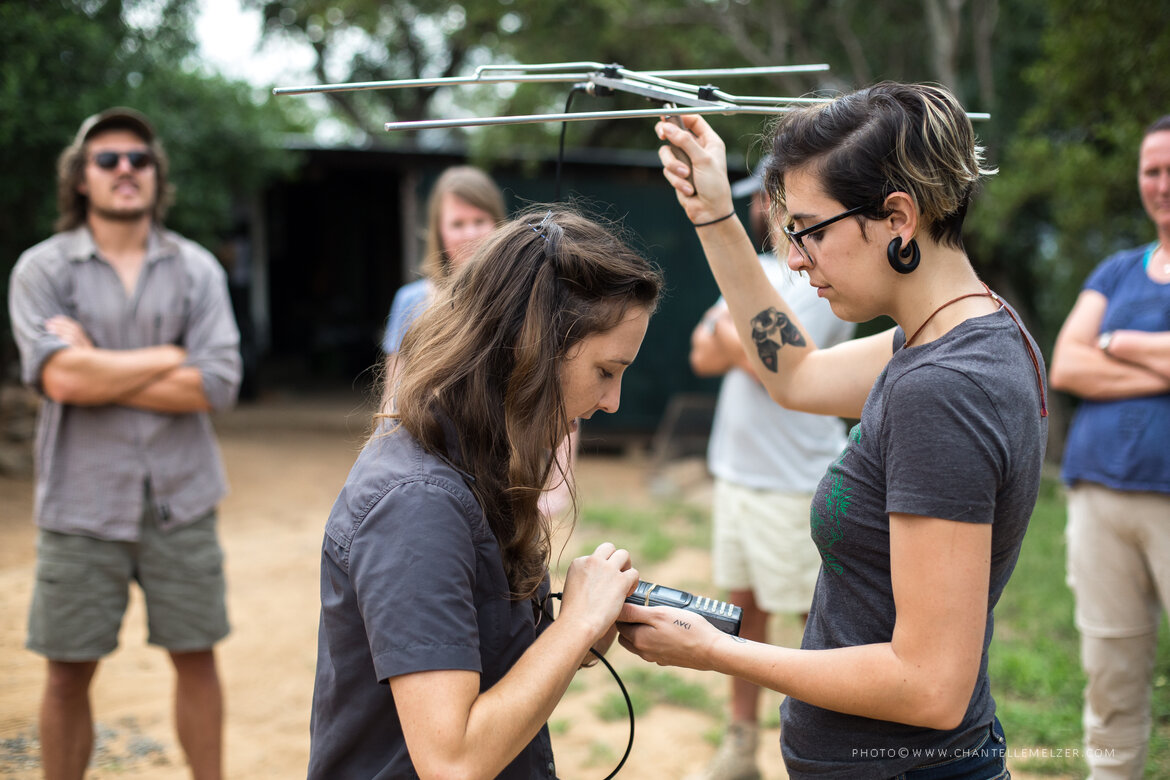Wildlife ACT has been able to provide sustained, free professional wildlife monitoring services to more than ten protected areas in Zululand for over twelve years through their conservation volunteering model. We are a team of experienced conservationists – rolling up our sleeves and getting our hands dirty working in the field 365 days a year – to save our endangered and threatened wildlife from extinction. We are an efficient team stretching every cent to make sure it is utilised in meaningful and focused wildlife conservation work.
Our main focus is on endangered African species such as:
- Black Rhino,
- African Wild Dogs and
- Vultures
- as well as priority wildlife species including:
- Cheetah,
- Elephant,
- Lion,
- Leopard,
- Hyaena
- and Southern Ground Hornbill.
Most of these species face the risk of poaching, either directly or indirectly due to snare poaching or poisoning. It is essential that these species are monitored continuously to ensure their safety and the data collected on these species directly aids reserve management with making informed decisions.
Our monitoring projects are funded by conservation volunteers who join us from all over the world. In this way we are able to offer a free service to the nature reserves we work on. Our wildlife volunteers fund the project running costs including fuel, tyres, monitoring equipment, and monitor salaries. Without our conservation volunteering funding model, we wouldn’t be able to run our projects or achieve what we’ve achieved.
Wildlife monitoring is the foundation for proactive and adaptive management of animal populations and their habitats, providing important insights for sustaining wildlife reserves. Any protected area ecosystem has a fluctuating capacity for different types of animals. Data on animal numbers, behaviour, and health inform an analysis of the conditions in an ecosystem, and of the opportunities and threats faced by any one species and its habitat, so that conservation managers can act accordingly.
The data collected by our monitoring teams and volunteers, help us to track endangered and priority species using telemetry monitoring equipment daily. This includes location data, feeding observations, condition assessments, and behavioural observations; with actual specifics depending on the species being monitored and observed. Critical information such as wounds, snares or the birth of new individuals is reported immediately to the reserve’s management staff.
The data that is collected is captured in our database and transferred to the reserve’s management in the form of both raw data and detailed monthly reports. There are also more comprehensive species reports produced quarterly, which guide the medium- to long-term management of these species. Wildlife ACT’s conservation volunteers are very active in cleaning, capturing and processing this sighting and camera trap data, thereby converting it into a usable form. Conservation volunteering also includes assisting with other project admin, such as logbook and identity kit upkeep. The wildlife volunteers also roll up their sleeves and get involved with more physical activities such as camp, fence, road and boma maintenance.
Wildlife ACT continues to achieve a number of milestones:
- 9 different species monitored
- Over 4,000 volunteers
- 953 tracking devices fitted
- Over 800 animals relocated
- Rescuing and treating over 258 snared or wounded animals
- 230,300 monitoring and field hours in vehicles, in the air, and on foot.
Our educational Kids Camps, in-school conservation lessons, conservation ambassador club programme and community game drives, have reached over 82,000 local children and adults – inspiring a new generation of conservationists.
Today, our organisation continues to grow and thrive, held up by dedicated staff, a global network of ambassadors and strong, committed partners. “We are extremely proud of what we have achieved and look forward to many more years of success in the conservation sector in Africa,” says Wildlife ACT’s Managing Director, Mark Gerrard.
We would welcome wildlife conservation volunteers even if we could fund these projects ourselves. We want every volunteer to leave with a sense of hope and inspiration to save endangered species and in doing so, conserve ecosystems globally. Every conservation volunteer we are able to inspire here goes back to his/her homeland as an ambassador for positive change; they may help to recruit more volunteers, to fundraise or to make changes in their own lives to contribute to saving endangered species. They carry the conservation message to all corners of the globe.
A source of significant pride to us is the fact that our conservation volunteers are so inspired by the work that we do that more than 14% of our participants are returning volunteers. In tourism industry terms, this is an exceptional achievement and a tangible endorsement of our impact.
We are pleased to share our conservation impact with a 12 year detailed report highlighting what we continue to achieve and how our wildlife conservation volunteers from around the world have helped to reach such milestones. Wildlife ACT offers award-winning, Fair Trade Tourism certified conservation volunteering projects across 5 different protected areas in Zululand, South Africa. Join us and get directly involved in some of the most important and exciting work being done on the ground by the professionals.
Find out more about becoming a wildlife conservation volunteer here.
RELATED POST: Model of Responsible Voluntourism: Infographic
